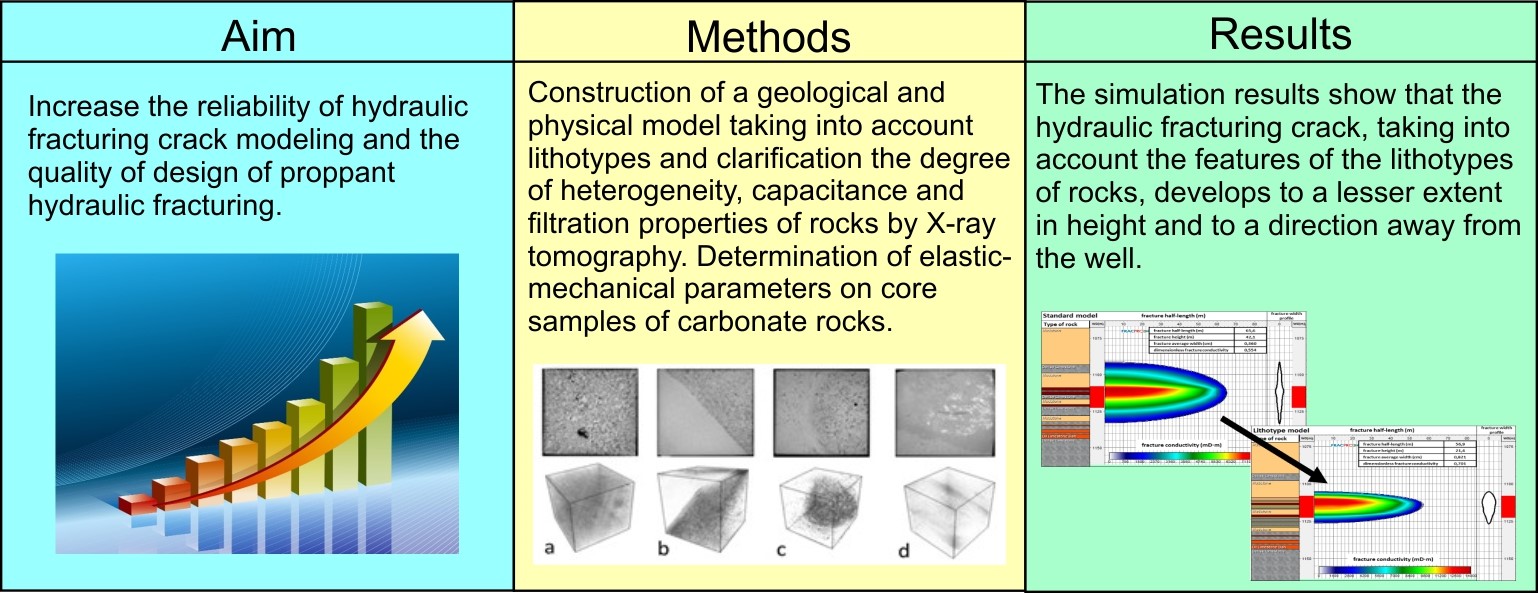 Open Access
Open Access
ARTICLE
Modeling of Crack Development Associated with Proppant Hydraulic Fracturing in a Clay-Carbonate Oil Deposit
1 Perm National Research Polytechnic University, Perm, Russian
2 Perm State National Research University, Perm, Russian
3 PermNIPIneft Branch of LUKOIL-Engineering LLC, Perm, Russian
* Corresponding Author: Sergey Galkin. Email:
Fluid Dynamics & Materials Processing 2023, 19(2), 273-284. https://doi.org/10.32604/fdmp.2022.021697
Received 28 January 2022; Accepted 09 May 2022; Issue published 29 August 2022
Abstract
Survey and novel research data are used in the present study to classify/identify the lithological type of Verey age reservoirs’ rocks. It is shown how the use of X-ray tomography can clarify the degree of heterogeneity, porosity and permeability of these rocks. These data are then used to elaborate a model of hydraulic fracturing. The resulting software can take into account the properties of proppant and breakdown fluid, thermal reservoir conditions, oil properties, well design data and even the filtration and elastic-mechanical properties of the rocks. Calculations of hydraulic fracturing crack formation are carried out and the results are compared with the data on hydraulic fracturing crack at standard conditions. Significant differences in crack formation in standard and lithotype models are determined. It is shown that the average width of the crack development for the lithotype model is 2.3 times higher than that for the standard model. Moreover, the coverage of crack development in height for the lithotype model is almost 2 times less than that for the standard model. The estimated fracture half-length for the lithotype model is 13.3% less than that of for the standard model. A higher dimensionless fracture conductivity is also obtained for the lithotype model. It is concluded that the proposed approach can increase the reliability of hydraulic fracturing crack models.Graphic Abstract

Keywords
Cite This Article
 Copyright © 2023 The Author(s). Published by Tech Science Press.
Copyright © 2023 The Author(s). Published by Tech Science Press.This work is licensed under a Creative Commons Attribution 4.0 International License , which permits unrestricted use, distribution, and reproduction in any medium, provided the original work is properly cited.


 Submit a Paper
Submit a Paper Propose a Special lssue
Propose a Special lssue View Full Text
View Full Text Download PDF
Download PDF Downloads
Downloads
 Citation Tools
Citation Tools